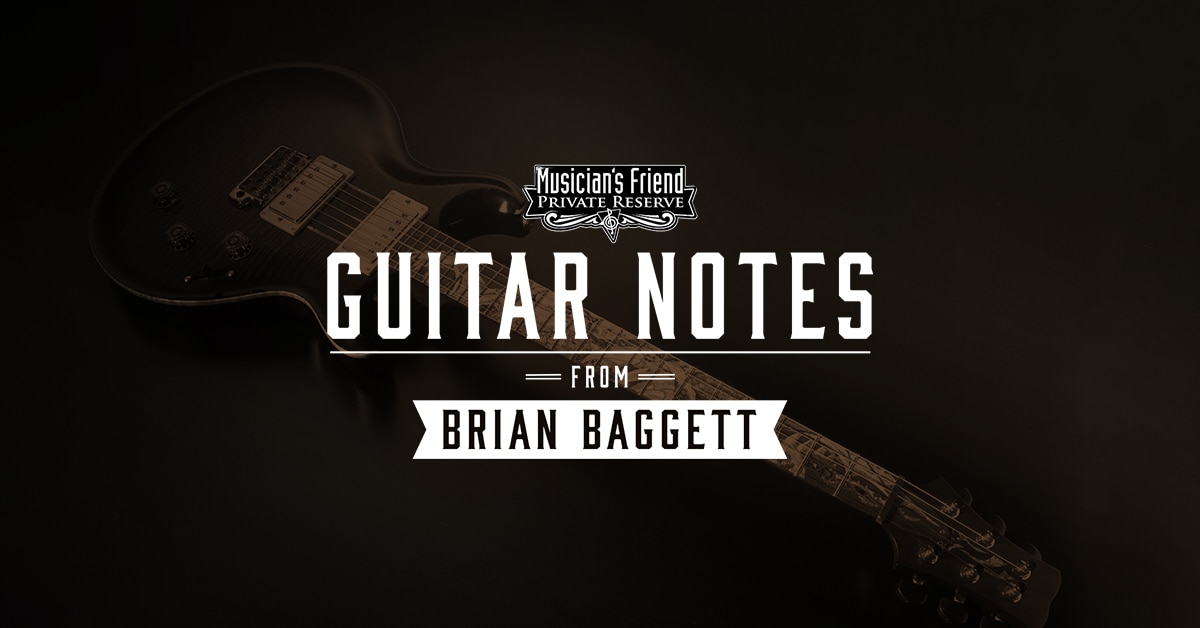In this edition of Guitar Notes I’m going to talk about 22-fret versus 24-fret electric guitars, taking a close look at the advantages and differences between these two types of guitar construction.
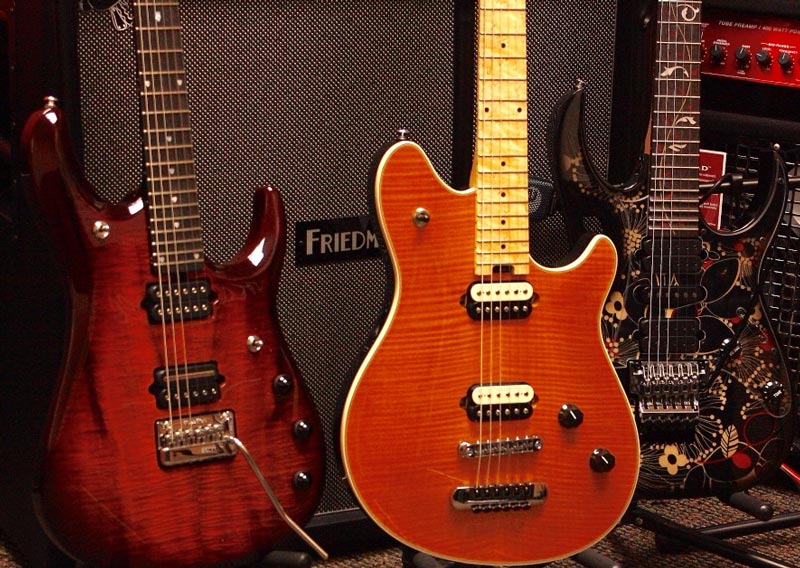
Left to right: Ernie Ball Music Man John Petrucci BFR 6 Koa Top (24-fret), EVH Wolfgang (22-fret) and Ibanez Steve Vai Jem Floral Pattern #2 (24-fret).
Let’s start with an overview of scale length. A guitar’s scale is determined by measuring the distance from the nut to the bridge saddle, or in other words, the length of the vibrating string. A vital part of guitar building involves placing the 12th fret exactly halfway between the saddle and the nut. This makes good intonation possible, meaning the guitar will play in tune up the entire neck. Common scale lengths are 24.75”, 25” and 25.5”. Adding or subtracting frets from a guitar doesn’t necessarily change the scale length, and quite often does not. Instead, the components of the guitar are moved forward or backward to keep the 12th fret located correctly. It is these adjustments in the guitar’s configuration that contribute to its signature sounds and playing characteristics.
Electric guitars most commonly have 22 frets. Some vintage Fenders (and their reissues) have 21 frets. In the ‘80s, along with the groundbreaking Floyd Rose locking tremolo, 24-fret necks started to become popular. Guitar makers like Ibanez and Jackson were selling “super strats” complete with 24 frets, Floyd Rose bridges and humbuckers. Some guitar makers like Steinberger offered 24-fret models exclusively.
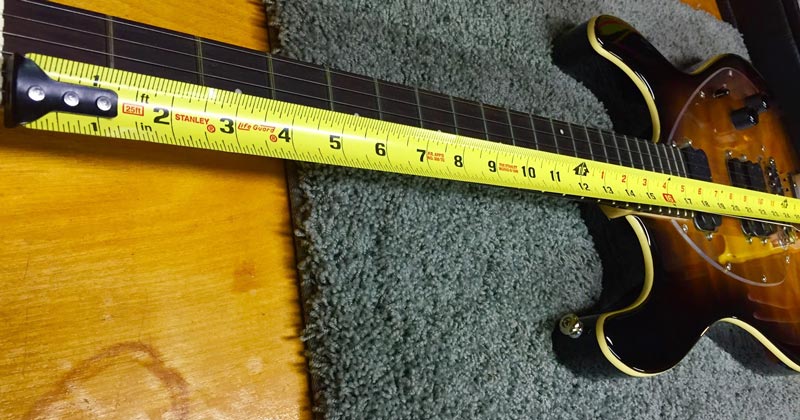
Finding out the scale length of a guitar is easy. Just measure from the nut to the point where the string goes over the saddle on the bridge.
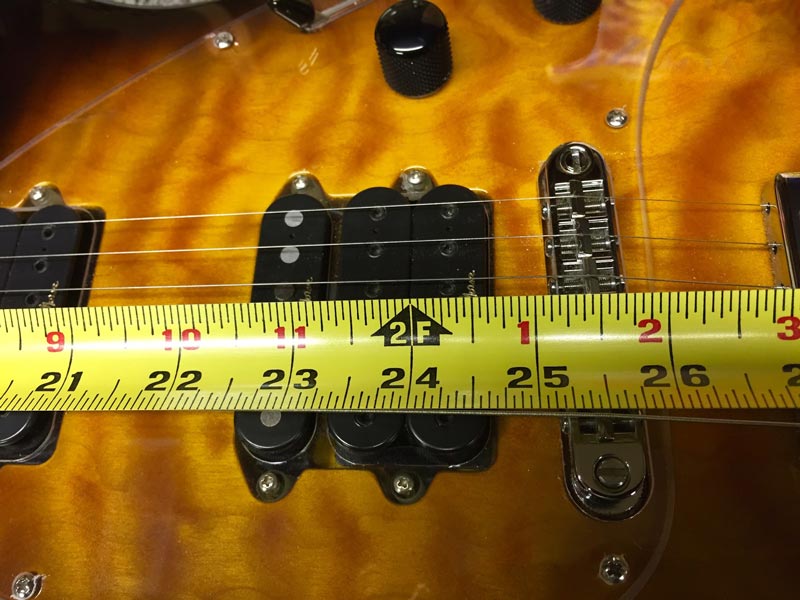
This Music Man Steve Morse Y2D has a 25.5” scale length and 22 frets.
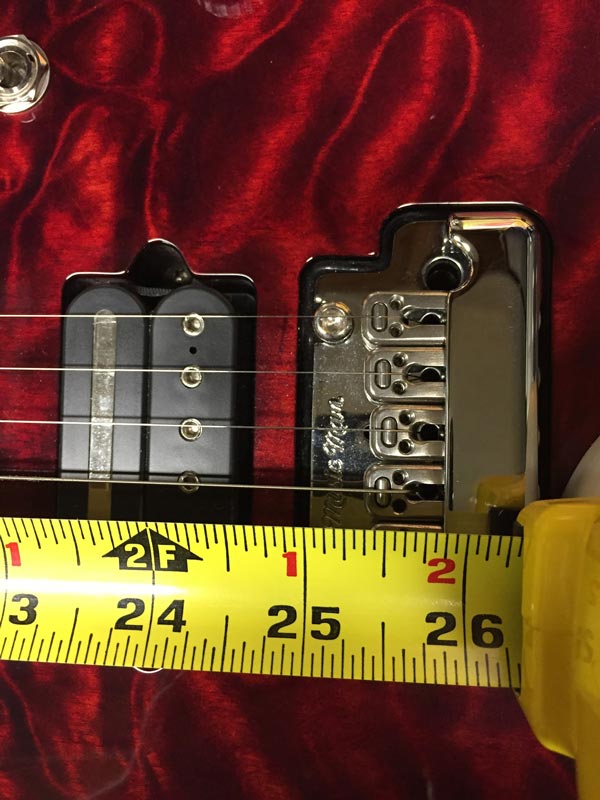
This Music Man John Petrucci BFR also has a 25.5” scale length, BUT...it has 24 frets.
Why go with a 22-fret electric? This is the classic! The A pentatonic position above the octave is very easy to see and you always know you can bend that last fret on the high E up to E. But the biggest difference is neck pickup placement. Because there are two less frets, the neck pickup is usually further away from the bridge.This gives the guitar a warmer, more mellow tone than a 24-fret neck pickup can produce. If you are looking for a guitar that can deliver a nice jazz tone, then a 22-fret will be superior to a 24-fret guitar. This goes for the classic Strat neck pickup tone too. Even some high-power shredders including Eddie Van Halen and Joe Satriani still prefer 22-fret guitars.
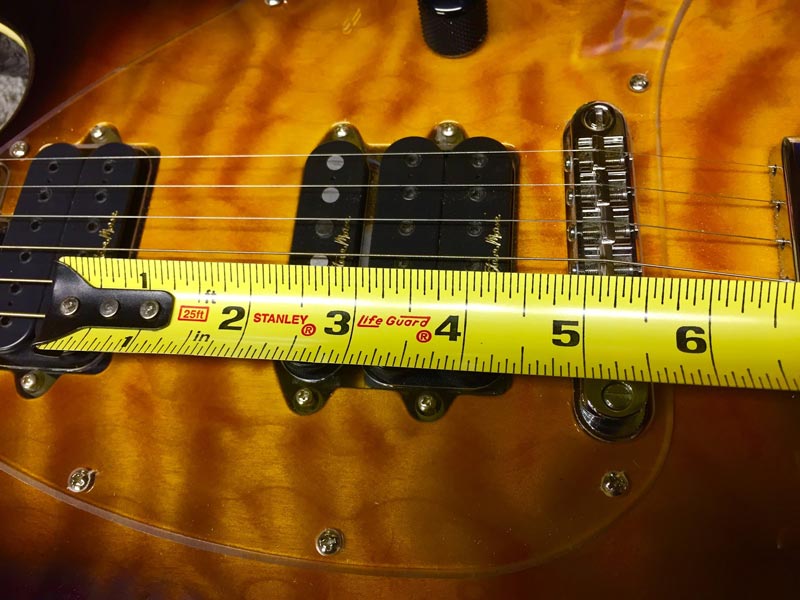
The distance from the bottom coil of the neck pickup to the saddle measures 5.25” on the 22-fret EBMM Steve Morse.
Why go with a 24-fret electric? Well there is the obvious answer: More frets! But there is more to it than that. I think the first 24-fret electric guitar I saw was Steve Vai’s Ibanez Jem. As a kid I owned some Ibanez RGs before moving into Strats, but I never really knew what if any difference there might be beyond the number of frets.The extra frets up there no doubt give the player more room to move, but what else? Once again, it’s about neck pickup placement. Remember that the scale length and midpoint octave have to be dead-on for the guitar to play in tune. When those two extra two frets are incorporated into the guitar body, the neck pickup is pushed closer to the bridge. Pickup response is just like picking response: when you pick close to the bridge the sound is bright, as you move closer to the neck, it grows darker and more mellow. Moving pickups on a guitar body has the same effect. The net result is brighter neck pickups on 24-fret guitars with their reduced distance to the bridge. For the modern rock guitarist this is a good thing. You can have a nice fat bridge pickup tone then move to the neck position without getting too muddy. The bridge and neck pickups are also more balanced from an EQ perspective in this situation. As I mentioned before, The Ibanez Steve Vai Jem is a great 24-fret model as is the Music Man John Petrucci. Watching these great players solo, you’ll see they are switching pickups constantly.
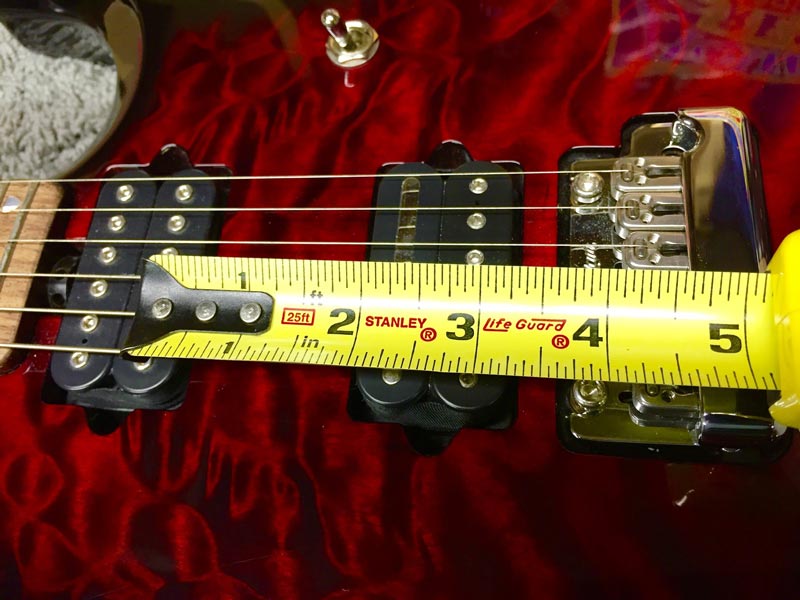
To make room for two more frets, the neck pickup on this Music Man John Petrucci BFR is one inch closer to the bridge (4.25”). This gives the neck pickup a clearer, more trebly tone that’s ideal in high-gain soloing situations.
Let’s review. If you want classic jazz and Strat neck tones, go with a 22-fret electric. If you play high gain solos and like to move from the bridge to the neck pickup, consider a 24-fret. But this is just a starting point. Always use your ears and remember there are no real rules! Also check out the PRS Custom 22 and Custom 24. Same guitar... one with 22 and one with 24 frets. They offer a great way to hear and feel the difference between the two configurations. Until next time...keep playing!
Visit our Private Reserve Guitars Shop or contact Derek White directly at 866-926-1923. He can get you the absolute lowest price on your dream guitar. Connect with Private Reserve Guitars on Facebook and Instagram.
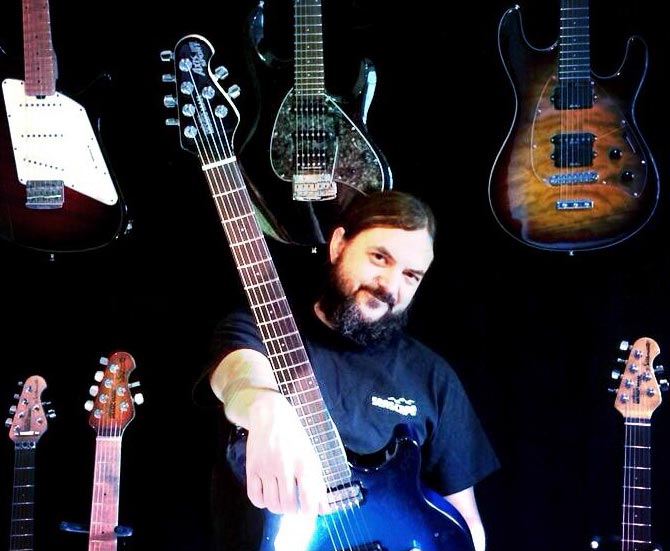
Brian Baggett is Video Presenter for Musician’s Friend Private Reserve Guitars. He curates the Private Reserve guitar collection on video, visits guitar factories and works closely with luthiers and signature artists to gain insight into the greatest guitars being built today. He is also a professional guitarist playing every Wednesday and Saturday night at The Green Lady Lounge in Kansas City. A former jazz guitar professor, Brian continues to teach guitar lessons and has a book and DVD titled Keys To Unlocking the Fretboard. Find Brian on Facebook and twitter.





































































































































